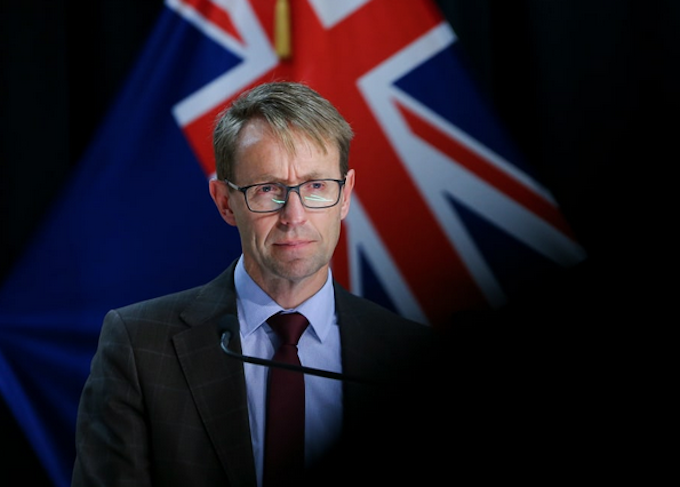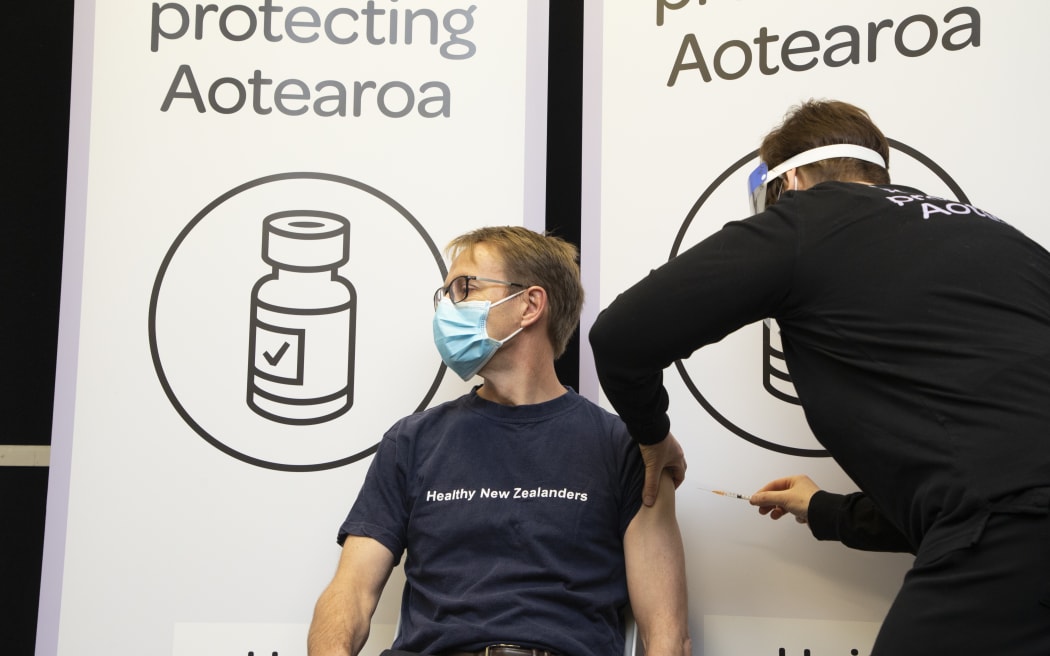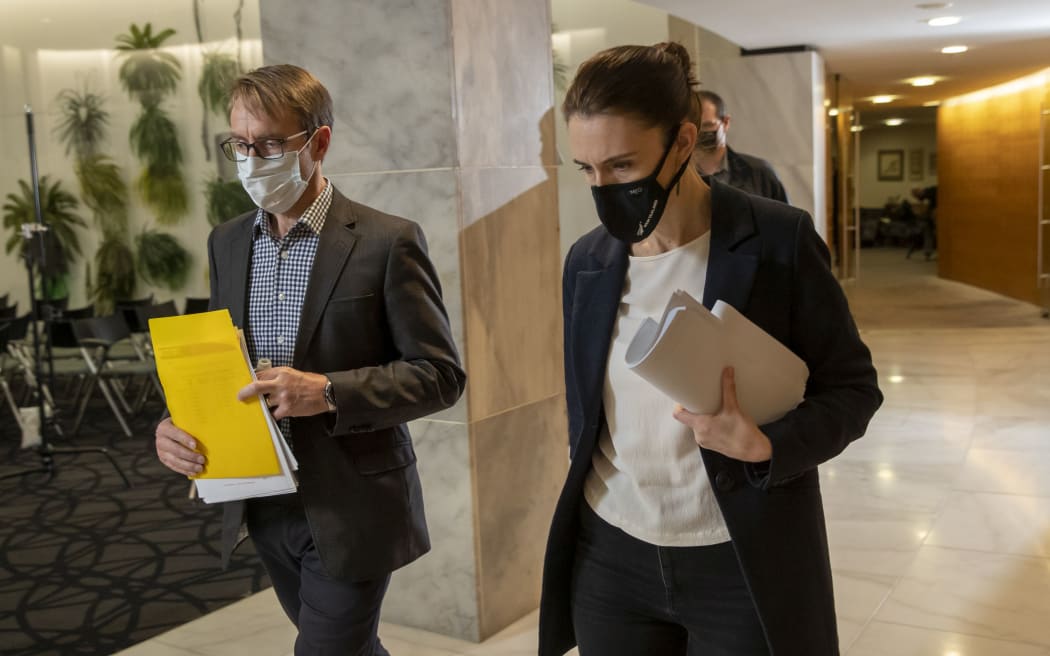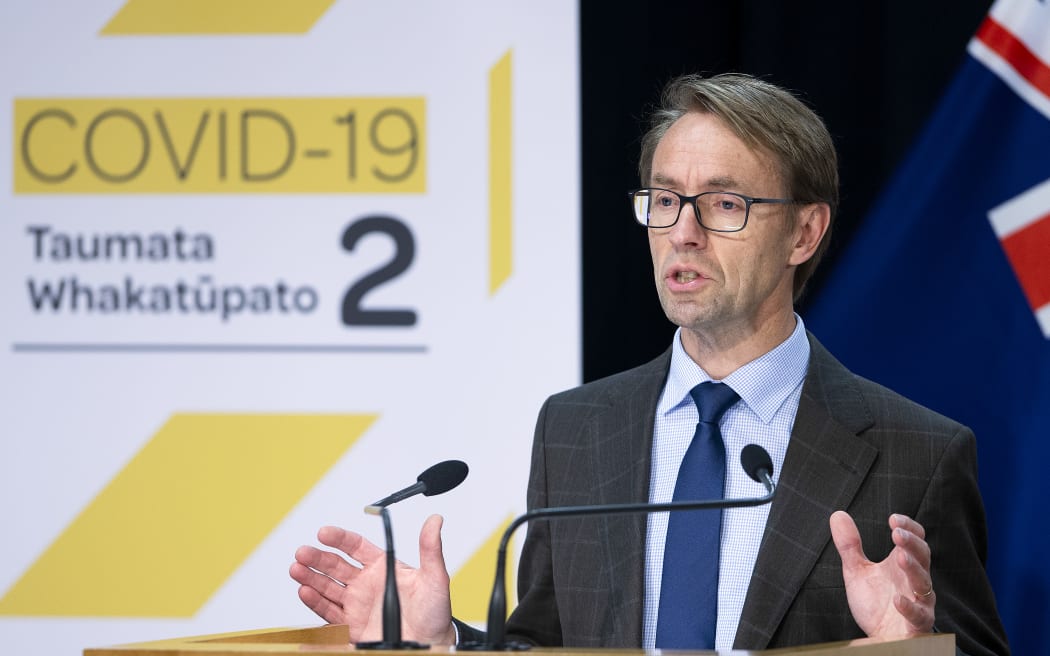
After leading the Aotearoa New Zealand’s covid-19 response for the last two years, Dr Ashley Bloomfield is stepping down from the role of director-general of health at the end of this month.
The softly spoken public servant became a household name early in the pandemic, his image gracing T-shirts, tote bags, mugs and even tattoos.
Having been appointed to the director-general role in mid-2018, Dr Bloomfield was officially set to finish his five-year tenure in June 2023 — but decided to resign from the “complex and challenging” role early.
- LISTEN TO RNZ SATURDAY MORNING: Kim Hill talks to Dr Ashley Bloomfield
- READ MORE: Other Dr Ashley Bloomfield reports
- Covid-19 update: 22 more deaths reported, with 7746 new community cases in New Zealand
- New Zealanders should be concerned about Monkeypox – epidemiologist
His last day on the job will be on Friday, July 29, at which time Dr Diana Sarfati will be acting Director-General of Health until a permanent appointee takes up the position.
Covid-19 cases have been inching upwards over the last several weeks but Dr Bloomfield said he was optimistic the wave will recede.
“We’ve seen over the last week it’s levelled off which is great,” he told RNZ Saturday Morning’s Kim Hill.
His plans for an epic “karaoke party” farewell were already derailed by the recent rise in Omicron cases, but he said caution is the way to go until things settle down.
Pandemic legacy
“I didn’t want my legacy in the pandemic to be taking out some of our tip-top politicians and the leadership of the health sector at a super-spreader event.”
But while Dr Bloomfield is leaving, the crisis he presided over is very much ongoing.
It was announced Friday that primary schools are expected to move from encouraging mask wearing to enforcing it again when Term 3 starts Monday.
While the change may be frustrating for some, covid-19 requires flexible responses, he said.
“I think there will be a high level of general acceptance of the role [masks] will play, especially through winter in the future.”
Dr Bloomfield himself caught covid-19 in May at a World Health Organisation conference in Switzerland, where he said he was surprised at the low level of mask wearing.
“There’s this talk about the rest of the world has moved on. Well, they might have moved on in terms of what they’re doing, but the virus hasn’t moved on. It’s creating just as much havoc as it has in the past.
Higher infection rates
“To think in the UK, they’ve got higher rates of infection and hospitalisation than we do even in the middle of summer, that’s something to worry about.
“There is a general commentary — not just in New Zealand but elsewhere — that we’re moving on, we’re living with covid.”
That’s premature, he said.
“The virus isn’t done with us yet. We’re still in a pandemic. The WHO [World Health Organisation] hasn’t withdrawn that categorisation and the virus continues to evolve,” he said.
“We’ve just got to keep our wits about us.”

Pressures ‘always there’
There have been many stories about the strain on emergency rooms and doctors and nurses the past few weeks, but Dr Bloomfield defended the response.
“The pressures that are on the health system now are always there and they’re not unique to New Zealand,” he said.
“I would say we were better prepared this winter than we’ve ever been any winter.
“We also knew that after two years of no flu, we would have a heavy flu season.”
Dr Bloomfield rejected claims that the health system was caught by surprise by the omicron surge.
“We certainly had time to prepare and did. But you can’t suddenly magic up a new workforce from somewhere, certainly not in a situation where a lot of that time the borders were closed, although we were getting new workers in from overseas.”
“Some of the commentary has suggested there are less staff now than there were,” but Dr Bloomfield said there had been a big increase between 2021 and 2022, including nursing and medical staff.
Shortages very localised
Dr Bloomfield said he did not dismiss the views of people on the ground, but said shortages were sometimes very localised.
“I might have a different view from the clinicians on the ground … What one particular clinician or service or institution or organisation might be experiencing might not be reflecting the experience across the system, which is the view I have.”
Dr Bloomfield said for example in the case of PPE, the problem was not supply but in getting the equipment to where it was needed.
“We also responded where we heard, ‘look, we can’t get this PPE here or there,’ then we made sure we would follow those particular problems up.”
There have also been concerns that Māori and Pasifika were not prioritised properly in the vaccine rollout.
Dr Bloomfield said border and health care staff and those over 65 were the first priority for the vaccine drive, but many Māori and Pasifika were also included in that uptake.
“For our first two months of the rollout of the over-65, our highest rates of vaccinations in that group was among Māori and Pasifika. It was ahead of non-Māori, non Pacific.
Younger Māori rates
“We knew that the group that would take the longest, probably because it required repeated effort to build trust, the longest to get higher rates among was our younger Māori. … And that’s the group where we had to put in a lot of extra effort and it took longer to get the rates up, but we did get there.”
That outreach had hopefully led more young Māori to take part in the health system, Dr Bloomfield said.
“There’s now over 100,000 people who previously were not in contact with the health care system who are now on the books because of the efforts that went in through that vaccination programme, so that’s a great legacy.”
Dr Bloomfield has stood at the podium dozens of times in the past couple of years, facing the country’s press as he updated the state of the pandemic for the nation. While at times it hasn’t been easy, he said he respects the media’s role.
“I have to say I’m a big fan of the media being able to do its job properly. It’s a fundamental pillar of strong democracy and it didn’t always feel that way when you were up there facing the music and something had gone wrong, which I had to a few times.
“But they’re doing their job and a big part of their job is making sure the government, including the public services, is accountable to the population.”

‘I was asking, why me?’
As his term as director-general ends, Dr Bloomfield said he’s not interested in becoming a thorn in the government’s side. He’d like to continue to work to improve deficiencies in the system, however: “In my mind the currency I’m interested in is influence.”
If he had known what the last few years held, would Dr Bloomfield have taken the job back in 2018?
“I have to say there were a few moments early on in the pandemic, I really questioned myself on that. I was asking, why me?
“This is a one-in-100 year pandemic and I’ve only got a five-year contract … bad timing,” he joked.
“You quickly forget the parts that were really tough and really challenging,” he noted.
“My abiding memory will be of what a privilege it was to be in this role at this time in this country. I have great hope for the future of this country based on my experience the last four years.”
But he’s still leaving the job a year early, although few would say he hasn’t put in the hard yards.
‘Given my all’
His last child recently left home, and he said: “I feel like I’ve given my all the last four years.”
With big changes happening in the structure of New Zealand’s health system, it seemed a good time to leave.

‘Very exciting’ time for health changes
Health NZ Te Whatu Ora replaced the country’s 20 district health boards at the start of July.
It’s one of the biggest overhauls in Aotearoa New Zealand history. Dr Bloomfield said he was hopeful for what it might bring.
“There are features of the change that I think are very exciting,” such as the establishment of the Māori Health Authority.
That said, he believes the DHBs served an important role in healthcare.
“The big challenge in any health system is getting this right balance between what’s done at a national or regional level and the responsiveness to local communities, and the DHB model allowed that in some part, that responsiveness to local communities.
“But it was very hard at times to get unity around things that were good for the system. I guess ultimately you’re looking for a system that’s unified but not uniform.
“Certainly Health New Zealand, in the way it’s been set up, is designed to try to get a better balance between that national and local delivery — and that’s a good thing.”
Optimistic about reforms
Dr Bloomfield said he was ultimately optimistic about the reform.
“There’s a risk that you can move the deck chairs around but nothing really changes. The reform has been carefully thought through.
“The proof’s always in the eating of the pudding, so it will be interesting to see how it plays out over the next few years.”
So if Ashley Bloomfield had not been a doctor, what might he have become?
“I always joke with my kids I would have been a police detective. Maybe that would’ve been another career direction.
“I really enjoy observing little bits of information and putting them together to create a picture.
“It served me well in my current career,” he said.
This article is republished under a community partnership agreement with RNZ.










































